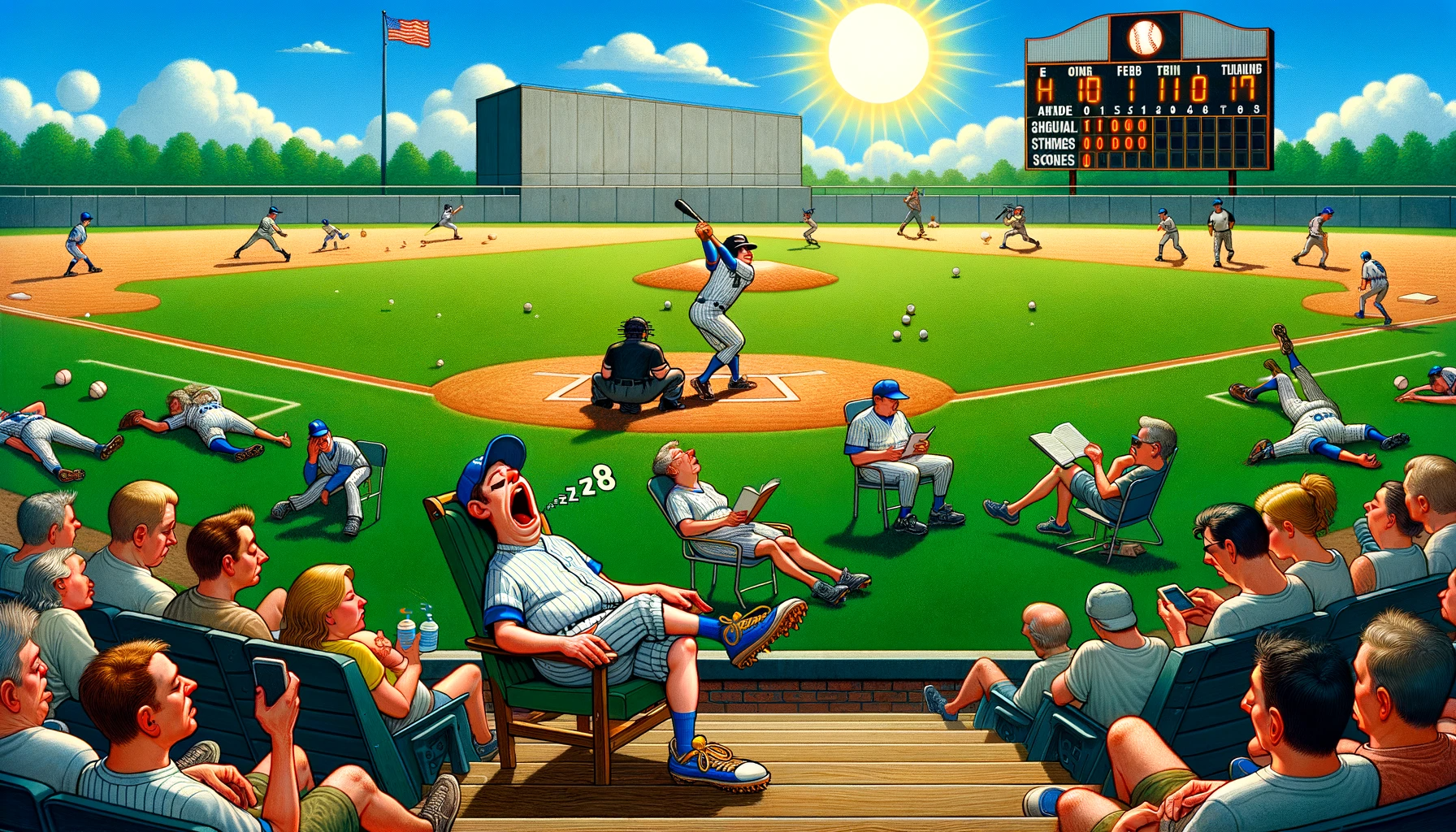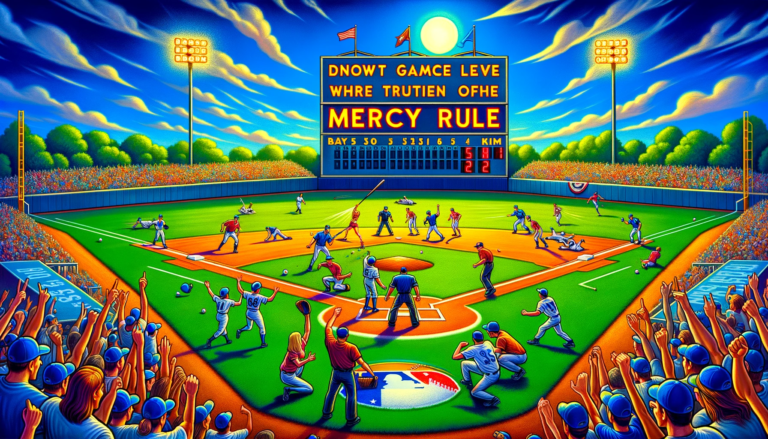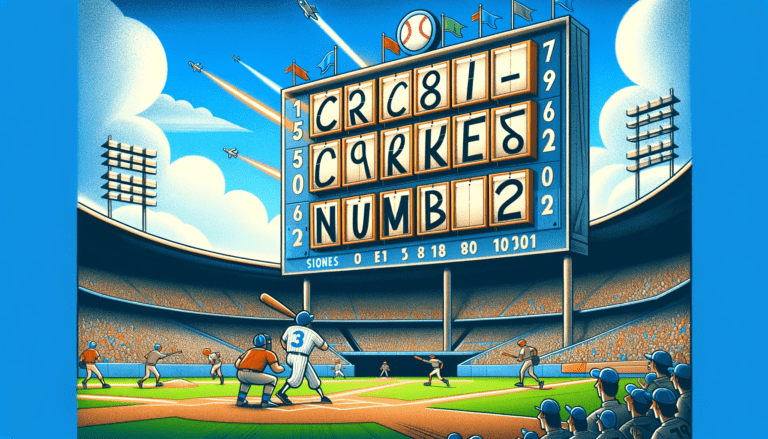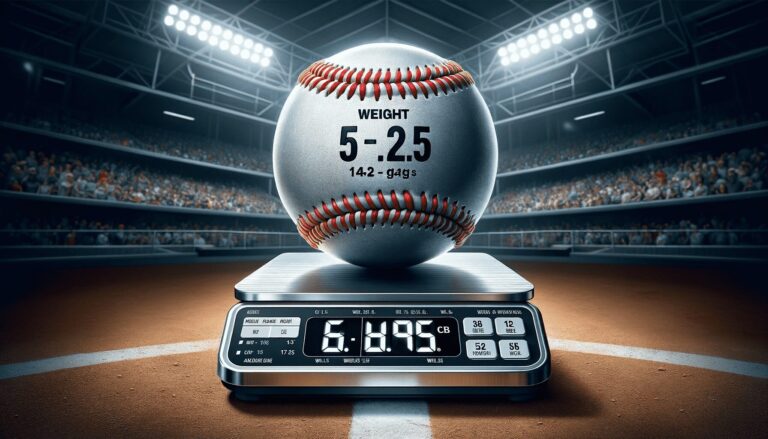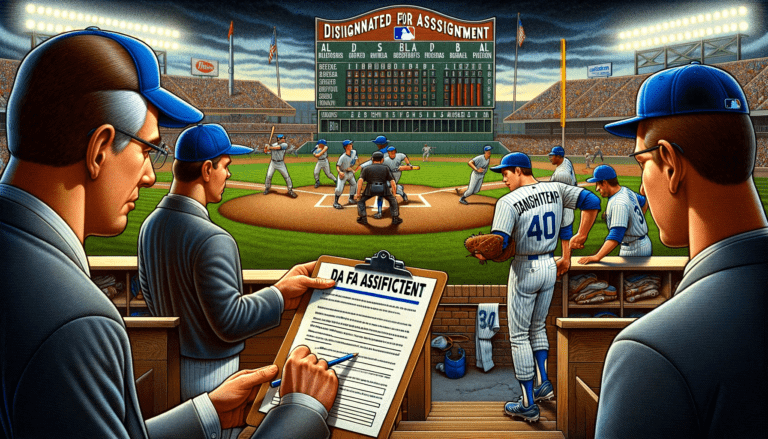Why is Baseball So Boring?
Many people find baseball boring because the game can be slow and lacks constant action. Unlike basketball or soccer where the pace is fast and continuous, baseball has a lot of downtime.
This includes the time between pitches, innings, and when players are just standing around. For those who prefer non-stop action, baseball’s leisurely pace can seem uninteresting.
In this article, we’ll explore the specific aspects of baseball that might make it less appealing to some fans and discuss what makes it enjoyable to others.
Whether you’re a die-hard fan or someone who’s just trying to understand the appeal of this classic American sport, this discussion is for you.
Key Takeaways
- The introduction of the pitch clock is a contentious change aimed at speeding up the game, but it raises concerns about pitcher injuries and the quality of play.
- Baseball struggles to maintain cultural relevance as it competes with high-energy sports, relying heavily on nostalgia and targeted marketing to attract a modern audience.
- The fragmentation of viewership due to the rise of streaming services and regional sports networks challenges traditional ratings and requires adaptation to new consumer habits.
- Opinions on baseball’s entertainment value vary widely between die-hard fans and casual viewers, with some suggesting that broadcasting innovations could enhance the experience.
- The future of baseball may involve significant rule changes and a focus on charismatic players and international expansion to revive interest and grow the global fanbase.
The Pace of Play: Is Faster Really Better?

Implementing the Pitch Clock: Pros and Cons
The introduction of the pitch clock in Major League Baseball has sparked a significant debate regarding its impact on the game.
On one hand, the pitch clock has been credited with reducing the average game duration to its fastest since the 1983 season, aiming to inject a quicker pace and heightened excitement into the sport.
Key changes include a 15-second limit with bases empty and a 20-second limit when runners are on base, with strict penalties for violations.
This has led to a notable increase in attendance, suggesting that fans appreciate a more streamlined experience.
However, concerns have been raised about the potential downsides. Critics argue that the rush to adhere to the clock may contribute to an increase in pitcher injuries, as they are forced to work within a more constrained timeframe.
This has been a point of contention among players, with some expressing that the accelerated pace could be detrimental to their performance and health.
Ultimately, the pitch clock’s future in baseball will depend on a balance between improving game flow and ensuring player safety.
Injuries and the Rushed Pitcher: A Growing Concern
The introduction of the pitch clock in baseball has sparked a debate on its impact on player health, particularly for pitchers.
The concern is that rushing pitchers may be contributing to the rise in injuries, a sentiment echoed by professionals like Kenley Jansen.
The Red Sox closer has expressed that the pressure to deliver pitches within the new time constraints could be the primary cause of the injury epidemic in MLB.
Key points to consider include:
- The pitch clock is set to 15 seconds with bases empty and 20 seconds with a runner on base.
- Pitchers are under increased pressure to perform quickly, potentially leading to compromised techniques and increased injury risk.
- While the pitch clock aims to speed up the game, the long-term effects on player health and performance remain a topic of intense scrutiny.
The balance between maintaining a brisk pace of play and ensuring the well-being of players is a delicate one.
As the league continues to monitor the situation, it’s clear that the health of pitchers must be a priority to preserve the integrity of the game.
The Impact of Game Duration on Viewer Engagement
The length of a baseball game impacts how much viewers enjoy it. Games are now shorter, averaging 2 hours and 39 minutes.
This is a big drop from previous seasons. With this change, people are asking: does this make more people watch the games?
- Shorter games may lead to a more dynamic viewing experience, potentially attracting a broader audience.
- Conversely, the condensed format could detract from the game’s traditional appeal, alienating long-time fans.
The balance between maintaining the sport’s integrity and adapting to modern viewers’ preferences is delicate.
While faster games could imply a more engaging experience, it is essential to consider the emotional connection fans have with the sport.
A strong emotional connection can lead to increased brand loyalty and positive perception, which are crucial for sustained engagement.
Read Also: Why is Softball Harder than Baseball
The Cultural Shift: Baseball’s Battle for Relevance

Competing with High-Octane Sports
In the realm of sports entertainment, baseball faces stiff competition from sports that boast a faster pace and higher levels of immediate excitement.
Sports like basketball and soccer offer continuous action, which can make baseball’s methodical pace seem lackluster in comparison.
This contrast is particularly stark for younger audiences, who have grown accustomed to the instant gratification provided by digital media and high-intensity sports.
- Baseball’s traditional, slower pace can be off-putting to some, especially when compared to the constant motion in sports like basketball.
- The strategic and contemplative nature of baseball may not resonate with fans seeking non-stop action.
- Marketing efforts may need to adapt to highlight the unique aspects of baseball that can appeal to a broader audience.
The challenge for baseball is to find a balance between honoring its storied traditions and evolving to capture the attention of a generation that craves immediacy.
A baseball fan might not like golf’s slow pace and low physical intensity. They might see baseball as the tougher sport.
But, to compete with high-energy sports, baseball might need to step up its marketing. This would help highlight the excitement and drama of America’s favorite pastime.
The Role of Nostalgia in Baseball’s Appeal
Nostalgia plays a pivotal role in baseball’s charm, often evoking memories of a simpler time when the crack of the bat and the roar of the crowd were integral parts of American culture.
Baseball’s history is rich with legendary figures and moments that resonate with fans across generations.
- The allure of historic ballparks
- The tradition of the seventh-inning stretch
- The timeless narratives of underdog triumphs
However, nostalgia also brings with it a complexity, especially when considering the sport’s past exclusivities and the evolution of societal norms.
Acknowledging the game’s history while striving for inclusivity is a delicate balance that baseball continues to navigate.
The ‘pitching crisis’ today is a reminder that the game is ever-changing, and clinging too tightly to the past may overshadow the need for progress.
Marketing Strategies to Attract the Modern Audience
In an era where the digital landscape is constantly evolving, baseball organizations must revolutionize marketing strategies to remain relevant.
Attracting the modern audience requires a multifaceted approach:
- Leveraging social media platforms to engage with younger demographics.
- Creating interactive experiences that go beyond the game, such as fantasy leagues and mobile apps.
- Partnering with influencers and celebrities to tap into their vast follower bases.
It’s not just about selling the sport; it’s about creating a community and an experience that resonates with today’s culture.
Baseball entities must also consider the power of data-driven marketing, tailoring campaigns to individual preferences and behaviors to maximize impact.
As the competition for attention intensifies, these strategies could be the key to not only attracting but also retaining a loyal fan base.
See Also: Why Do Baseball Players Chew Gum
The Digital Age: Streaming and the Fragmentation of Viewership

The Rise of Subscription Bundles and Their Effect on Ratings
The shift towards subscription bundles has had a profound impact on baseball viewership.
Only a small fraction of pay TV subscribers actively watch their local Regional Sports Networks (RSNs). These networks are key to keeping traditional pay TV profitable.
Despite their importance, RSNs often bring slim profit margins for providers. This leads some to rethink including them in packages.
RSNs can cost $20-$30 per month. This adds to the trend of cord-cutting as people look to avoid high costs of traditional pay TV bundles.
This has resulted in a weaker RSN business and a move for some baseball games back to over-the-air TV stations.
The challenge for baseball is to adapt to these changes and find ways to retain viewer interest in a market that is increasingly turning away from conventional cable subscriptions.
- The importance of RSNs for local viewership and revenue.
- The impact of cord-cutting on the RSN business model.
- The potential for baseball to return to over-the-air broadcasts as a response to these trends.
Regional Sports Networks and Local Viewership Dynamics
The dynamics of local viewership are intricately tied to the presence of Regional Sports Networks (RSNs).
These networks have traditionally been the lifeblood of baseball’s local markets, offering fans a consistent and intimate connection to their favorite teams. However, the landscape is shifting.
Cord-cutting trends and the high costs of RSNs are leading to a decline in traditional pay TV network bundles, with RSNs often being the first to be dropped due to their slim profit margins for operators.
- Only 10%-15% of pay TV subscribers regularly watch their local RSN.
- RSNs can cost subscribers an additional $20-$30 per month.
- National TV ratings for baseball have shown mixed results, with some networks experiencing declines.
The question remains whether a faster, more engaging baseball product will entice these local sports viewers back to their screens, whether through streaming services, cable, or over-the-air broadcasts.
The industry grapples with these challenges. It’s clear that both the promotion of games and the market dynamics are being disrupted, potentially affecting the business at its core.
Adapting to the Preferences of a Streaming-First Generation
In an era where the streaming-first generation dictates the pace of content consumption, baseball faces the challenge of adapting to a new set of viewer preferences.
The question remains whether a faster, more dynamic version of baseball will resonate with these viewers.
- The streaming landscape offers a plethora of choices, demanding sports to be more engaging to maintain viewer interest.
- Baseball’s traditional slow pace is at odds with the instant gratification sought by modern audiences.
- Innovations in streaming technology could provide opportunities for baseball to offer more personalized and interactive viewing experiences.
As baseball attempts to evolve with the times, it must consider how to balance the essence of the game with the expectations of a generation that has grown accustomed to on-demand entertainment.
Will the integration of advanced streaming features and a potential shift in game dynamics bring back viewers who find baseball less appealing? This remains a pivotal question for the sport’s future.
The Fan Perspective: What Makes Baseball ‘Boring’?

The Slow Nature of the Game and Its Impact on Attention Spans
In an era where the pace of life is ever-accelerating, baseball’s leisurely rhythm stands in stark contrast.
The slow nature of the game is often cited as a deterrent for the modern viewer, whose attention span is bombarded by a multitude of faster-paced entertainment options.
This has led to a growing concern that baseball may not be keeping up with the times, potentially alienating new fans.
- The implementation of a pitch clock aims to address this by speeding up the game, a move that has seen the average game duration drop significantly.
- Despite these efforts, some fans argue that the essence of baseball is its thoughtful, deliberate pace, which allows for strategic depth unlike any other sport.
- The challenge lies in balancing the traditional aspects of the game with the need to adapt to the preferences of a generation accustomed to instant gratification and rapid-fire content.
Real Fans vs. Casual Viewers: Differing Opinions on the Game’s Pace
The divide between real fans and casual viewers often centers on their perceptions of baseball’s pace.
Real fans may savor the strategic nuances of the game, appreciating the slow build-up and tension that can define critical moments.
They often view the leisurely pace as an integral part of baseball’s charm, allowing for a deeper understanding and appreciation of the sport.
Casual viewers might be turned off by the slow pace of baseball. The lack of constant action and long game times don’t fit the quick satisfaction found in today’s fast-paced entertainment.
A New York Yankees blog points out that baseball’s simple and clear nature might not meet the excitement casual fans expect.
- The strategic depth appreciated by die-hard fans.
- The preference for quicker, more dynamic sports among casual viewers.
- Marketing efforts to bridge the gap and cater to both audiences.
Innovations in Broadcasting: Can They Spice Up the Viewing Experience?
The broadcasting landscape for Major League Baseball is transforming with the introduction of cutting-edge technologies aimed at enhancing the fan experience.
From high-definition video to advanced camera systems, these innovations are not just a leap in quality but a potential game-changer in how we consume sports.
- Advanced camera systems that provide new angles and perspectives
- Virtual and augmented reality experiences that bring fans closer to the action
- Interactive features that allow viewers to personalize their viewing experience
The question remains whether these enhancements can significantly impact viewership numbers.
With the rise of streaming services and the fragmentation of traditional viewership channels, MLB faces the challenge of adapting to the preferences of a streaming-first generation.
Innovations in MLB broadcast technology may be the key to not only retaining existing fans but also attracting new ones who seek a more dynamic and engaging way to watch baseball.
Looking Ahead: The Future of Baseball in the Public Eye

Potential Rule Changes and Their Implications for the Sport
As Major League Baseball evolves, new rule changes are often at the forefront of discussions about the sport’s future.
The introduction of a pitch clock, which limits pitchers to 15 seconds with the bases empty and 20 seconds with a runner on base, is a significant shift designed to speed up the game.
The batter, too, must be ready to hit with at least eight seconds remaining, adding a layer of urgency to each at-bat.
The implications of these changes are multifaceted:
- Game Duration: Shorter games aim to enhance viewer engagement, with the hope that a faster pace will retain attention spans.
- Player Performance: Adjusting to the new timing may affect pitchers’ routines and potentially lead to a rise in injuries.
- Attendance and Ratings: Initial results show a promising 10% increase in attendance, but it remains to be seen if this trend will continue and translate into higher television ratings.
While some fans appreciate the quicker pace, others remain skeptical, questioning whether the essence of the game is being compromised.
Marketing efforts will need to adapt, as the sport seeks to balance tradition with the demands of a modern audience.
The Role of Big League Personalities in Reviving Interest
The charisma and influence of big league personalities cannot be understated when it comes to reviving interest in baseball.
Players with magnetic personas and exceptional talent have the power to draw crowds and inspire new generations of fans.
For instance, the celebration of Jackie Robinson Day is a testament to the enduring impact of a player’s legacy on the sport.
- The presence of superstar athletes can lead to increased ticket sales and viewership.
- Engaging player narratives and personal stories enrich the fan experience.
- Charitable activities and community involvement by players strengthen local and national support.
However, the challenge lies in effectively marketing these personalities to capture the fragmented attention of the modern audience.
With the rise of digital platforms, there’s a need for strategic storytelling that resonates across diverse demographics.
The MLB feels the impact of trends in America’s youth baseball. It must also think about how to use its stars to create a more inclusive environment. This will help ensure the sport’s growth and sustainability.
International Appeal and Expanding the Global Fanbase
While baseball remains a staple of American culture, its international appeal has often lagged behind sports like soccer and basketball.
Expanding baseball’s global fanbase is crucial for the sport’s growth and sustainability.
To achieve this, several strategies could be employed:
- Embracing digital platforms to stream games internationally, making baseball more accessible to a global audience.
- Investing in grassroots programs to nurture talent and interest in countries where baseball is less popular.
- Hosting international exhibition games and tournaments to showcase the sport’s excitement and competitiveness.
The challenge is not just to promote the sport abroad but also to adapt it to different cultures without losing its unique American heritage.
If successful, this could greatly increase international viewership and merchandising opportunities. This would help strengthen baseball’s place in the global sports arena.
Conclusion
In conclusion, many find baseball boring due to its slow pace and long game times. With fewer moments of high action compared to other sports, it struggles to keep the attention of those who crave quick excitement.
However, for fans who appreciate strategy and the subtle nuances of the game, baseball offers a deep and rewarding experience. Whether it’s exciting or not may just depend on what you look for in a sport.
Frequently Asked Questions
Why do some people find baseball boring?
Some people consider baseball boring due to its slower pace and less constant action compared to other sports. The game has natural pauses and a rhythm that may not align with the attention spans and preferences of all viewers.
How has the implementation of the pitch clock affected the game?
The pitch clock aims to speed up the game by limiting the time pitchers can take between pitches. While it can make the game faster, there are concerns about injuries to pitchers who may feel rushed and the potential impact on the strategy of the game.
How does the digital age affect baseball viewership?
The rise of streaming services and subscription bundles has fragmented viewership. Baseball is adapting by offering more digital content and exploring ways to engage with a streaming-first generation.
What are real fans saying about the pace of baseball?
Long-time baseball fans often appreciate the strategic depth and history of the game, which can include a slower pace. However, even among die-hard fans, there is a debate about whether the game should be sped up to maintain interest.

